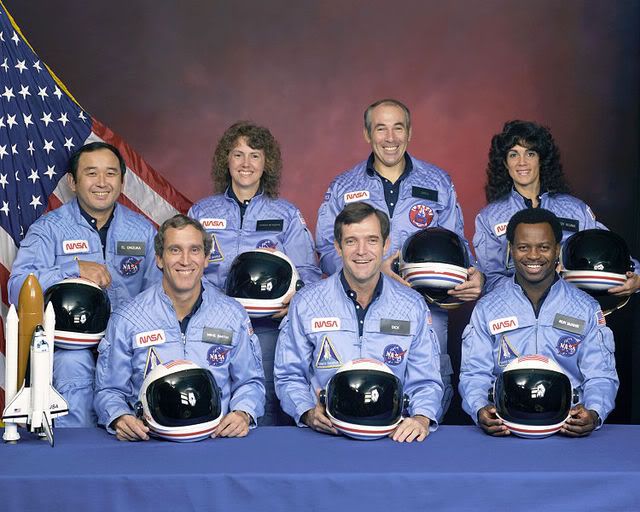On the cold, crisp, clear morning of January 28, 1986, the Space Shuttle Challenger lifted off from launch complex 39A at Cape Canaveral, and exploded one minute and thirteen seconds into its flight. I first wrote about my recollection of that event here in 2005 in my post This is Why I Read Blogs. Here’s the pertinent part, edited for accuracy:
As some of you may know, I grew up on Florida’s Space Coast. My father was a Quality Control engineer for IBM, working on the Instrument Unit (guidance system) for the Saturn V rocket. I got to see all of the manned missions up through Skylab launch from just across the Indian River, except for Apollo XVII – the only night launch. I watched that one from my front yard in Titusville.
There were two dawns that day.
Consequently, I’ve been a space exploration enthusiast from a young age. I try to watch all the launches, or at least listen to them on the radio. I remember listening to the launch of the Challenger early in the morning here in Tucson, and thinking – as the station broke for a commercial – “At least this one didn’t blow up on the pad.”
Morbid, I know, but I’m also an engineer. I wasn’t then – I had just graduated from college in December and didn’t have a job yet – but that’s been my orientation for most of my life. I knew that each manned launch was a roll of the dice, a spin of the cylinder in a big game of Russian Roulette, and that NASA had become just another government bureaucracy. (And I also knew just how close we had come to losing three men in Apollo 13 because a series of small, innocuous errors had cascaded into a catastrophic failure in a system that was almost neurotic in its quest for safety.)
It was just a matter of time.
Still, I was shocked when they came back from commercial to announce that Challenger had been destroyed in a launch accident just a minute after liftoff. I knew that all seven of the astronauts were dead. I knew that the “teacher in space” wasn’t going to get there, and that a classroom of students had to be devastated by that realization. Many, many classrooms, but one in particular.
I watched the footage of the liftoff, now splayed in endless grisly loops on every network – all of which had previously declined to show the launch live and interrupt really important stuff like “Good Morning America.” I watched as the flame bloomed out from a Solid Rocket Booster joint, impinging on the huge external fuel tank, and said, “That’s what killed them. What the hell caused that failure?” I watched the Satan’s horns of the SRB exhaust tracks as they trailed up and away from the epicenter of the blast. And then I watched it all again.
Over and over.
Later I discovered that the engineers at Morton Thiokol had tried to get the launch scrubbed, knowing the problems that cold weather caused in the O-ring joint seals of the SRBs, but they had been told to “take off their engineer hats and put on their manager hats” in order to make a launch decision. The launch had been delayed too many times, and President Reagan would be making his State of the Union address that night, with a call to Crista McAuliffe – Teacher in Space.
I decided right then that I didn’t ever want to be a goddamned manager.
I still don’t. (No offense, boss! Somebody has to be, just not me!)
Here’s seven reasons not to “take off your engineer hat”:

Never forget them.